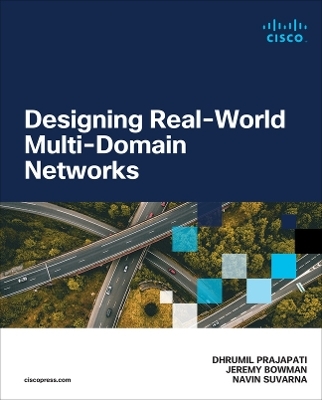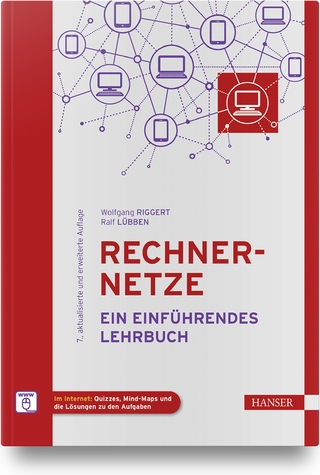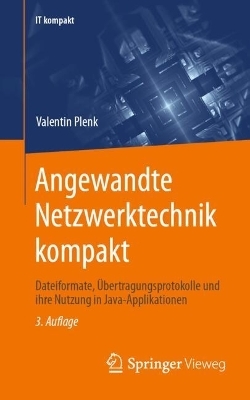
Designing Real-World Multi-domain Networks
Cisco Press (Verlag)
978-0-13-803721-5 (ISBN)
Prajapati, Bowman, and Suvarna’s more than 50 years of combined customer network-building experience will help you translate your organization’s business and technical intent into a fully functioning, secure, and efficient network.
Catalyst SDA, Catalyst SD-WAN, ACI MPLS, CNFs, Cloud, and Security technology domains account for a large market share in consumer networks as a replacement for traditional monolothic networks. Designing Real-World Multi-Domain Networks is designed for architects and engineers who want to integrate these new and emerging multi-domain technologies so you can be at the front of this inevitable network change.
Written with great care, this technical book is divided into three clear sections, guiding readers into the world of blending architecture with technology. Each chapter focuses on a different aspect, explaining how modern technology integrates and interoperates with other architectures.
You have the freedom to choose how you read. You can go through the book from start to finish like a story, or you can jump straight to the parts that interest you the most. The layout is made to be flexible, suiting both those who like to read in order, and those who want quick solutions.
The book ends with five real-life examples, connecting theoretical ideas to practical results. These stories make the lessons clear, giving you the understanding and skills needed for real-world projects.
Understand how Cisco Catalyst SD-Access, Catalyst SD-WAN, ACI, MPLS, CNFs, Cloud, and Security interoperate with each other to form end-to-end segmented and secure networks
Understand details on how a packet behaves as it transits one technology domain to another
Get answers to big what, whys, and hows surrounding multi-domain networks
Learn from actual real-world deployment of Cisco customers
Gain valuable insight from the authors’ previous large-scale deployments
Utilize reference architecture for using these technologies in tandem
Dhrumil Prajapati: Dhrumil is a principal architect within Cisco CX’s GES Architecture team. His focus lies on multi-domain networks, and he has been offering a complete lifecycle of professional services and architecture advisory for the past 13 years. His expertise extends to serving enterprise, government, and service provider entities across the globe. His services are designed to assist clients in planning, designing, deploying, managing, and interoperating all networking technology domains within their private or public infrastructure and application environments. In his networking career, Dhrumil has designed networks for more than 150 organizations, which inspired him to write a book on the subject. He is a coauthor of Cisco SD-Access for Industry Verticals (https://cs.co/sda-verticals-book), and holds patents and has given multiple presentations in Cisco Live on SD-Access and multi-domain. Dhrumil holds dual CCIEs in Enterprise Infrastructure and Service Provider, as well as a CCDE, in addition to other leading technical certificates. He also assists the Cisco Certifications team by reviewing and providing feedback for Cisco certificate exams. In addition, he leads several initiatives within Cisco CX aimed at driving delivery standardization and enhancing efficiency through automation innovation. Currently residing in Apex, North Carolina, Dhrumil has a passion for motor racing, woodworking, and innovative electronics that enhance human life. His wife, Devanshi, and son, Ram, bring pure joy to his life, adding a touch of fun to every day. Jeremy Bowman: Jeremy is a senior solutions architect within Cisco CX’s GES Architecture team. Within the GES team, he has more than 10 years of experience focusing on designing and implementing large-scale multi-domain IBN environments that meet the client-specific requirements. Additionally, he has presented several sessions at Cisco Live. Jeremy is a CCDE and double CCIE in Enterprise Infrastructure and Security. He also has professional-level certification in three other Cisco certification tracks. Inside Cisco, Jeremy is a mentor to other architects and engineers, sits on several CX design review panels, and interacts with engineering to help further product development. When not working, he enjoys spending time with his family at home, camping, or on the lake. Navin Suvarna: Navin possesses more than 18 years of extensive experience as a seasoned network delivery architect. With a decade-long tenure at Cisco, he has adeptly architected, designed, tested, operationalized, managed, and optimized expansive networks across service providers, global enterprises, and public sector segments. Holding the distinguished CCIE (No. 24583) in enterprise networking, Navin boasts an impressive collection of professional-level certifications. Since the inception of software-defined networking, Navin has actively contributed to Cisco’s incubation team, playing a pivotal role in incubating multiple intent-based solutions. His expertise has been instrumental in facilitating the adoption, assimilation, and rapid deployment of intricate multi-domain solutions. In the past four years, Navin has held the role of lead delivery architect for the United States Public Sector team. While specializing in multi-domain solutions, his proficiency in aligning network infrastructure with the evolving needs of the public sector has garnered affiliations with thought leaders in both the public sector and Cisco engineering. This collaboration has resulted in the development of novel features, functions, and validated practices tailored to multidomain architectures, addressing the specific requirements of public sector clients. While Navin’s specialization remains rooted in multi-domain intent-based networks, his recent focus centers on educating clients about the value proposition of automation and guiding them on their automation journey. An active speaker, Navin has shared his insights and experiences of architecting multi-domain solutions on global platforms, including Cisco Live. He also champions hands-on demonstrations and automation showcases, offering real-world insight into intent-based networking through automation use cases. Beyond his professional pursuits, Navin finds joy in his 14-year marriage to his wife, Rupali. Their family includes their 12-year-old daughter, Trisha, and 6-year-old son, Vivaan. They currently reside in Research Triangle Park, North Carolina.
Introduction xxiv
Part I Introduction
Chapter 1 Multi-Domain Networks 1
Overview 1
What Are Multi-Domain Networks? 2
Why Do We Need Multi-Domain Networks? 14
Summary 19
Part II Multi-Domain Design
Chapter 2 SD-Access and Campus Fabric 21
Overview 21
Interaction with the Outside World 22
Inter-working with SD-WAN 25
Inter-working with ACI and Data Center Fabric 31
Inter-working with MPLS 34
Inter-working with CNF 37
Inter-working with Security Stack 41
Summary 44
Chapter 3 SD-WAN and DMVPN 45
Overview 45
SD-WAN 45
SD-WAN and SDA 46
SD-WAN and ACI 52
SD-WAN with MPLS 56
SD-WAN and the Cloud 57
DMVPN 61
DMVPN and SDA 62
DMVPN and ACI 64
Summary 66
Chapter 4 Application Centric Infrastructure (ACI)—Integration and Multi-Domain Capabilities 67
Overview 67
Key Components 70
ACI and SD-Access Pairwise Integration 88
Summary 162
Chapter 5 Enterprise MPLS 163
Overview 163
Interaction with the Other Domains 166
Inter-working with SD-Access 166
Inter-working with SD-WAN 170
Inter-working with ACI 178
Inter-working with CNF 181
Inter-working with Security Stack 187
Summary 189
Chapter 6 Carrier Neutral Facilities 191
Overview 191
Interaction with Other Domains 192
Inter-working with SD-Access and Campus Fabric 193
Inter-working with SD-WAN, MPLS, and DMVPN 199
Inter-working with Data Centers 214
Inter-working with Cloud 220
Inter-working with the Security Stack 224
Summary 227
Chapter 7 Cloud 229
Overview 229
Integration with Campus Networks 233
Integration with WAN 236
Integration with CNFs 243
Integration with MPLS 246
Integration with Security Stack 247
Summary 251
Chapter 8 Security 253
Overview 253
Security Policy 254
Security and SDA 254
Security and SD-WAN 262
SD-WAN Security and the Cloud 267
Security and DMVPN 267
Security and ACI 270
Security and the Cloud 271
Security and Zero Trust 272
Summary 272
Chapter 9 Automation 273
Overview 273
CI/CD Pipeline 273
Automation and SDA 276
Automation and SD-WAN 278
Automation and DMVPN 281
Automation and ACI 282
Automation Across Multiple Domains 284
Summary 284
Part III Real-World Use Cases
Chapter 10 Manufacturing Use Case with SDA, SD-WAN, and CNF 285
Use Case Overview 285
Summary of Requirements 286
Deployed Solution 290
Summary 305
Chapter 11 Financial Use Case 307
Use Case Overview 307
Campus Design Modularity 308
Campus Macrosegmentation 310
Campus Microsegmentation 312
Extending Campus Segmentation 315
SDA Data Center Services 318
SD-WAN Data Center Services 321
SD-WAN Centralized Policy 322
Summary 326
Chapter 12 Retail Use Case Using CNF, SD-WAN, and ACI 327
Use Case Overview 327
Overall Design 328
Data Center and CNF Design 330
SD-WAN Design 343
Campus/Branch Design 355
Cisco TrustSec and Meraki Adaptive Policy 359
Hybrid Cloud Integration 371
Summary 380
Chapter 13 Public Sector Use Case 381
Use Case Overview 381
Overall Design 382
ACI MPLS-SR Integration 388
ACI Logical Design and VMM Integration 401
Infrastructure Automation and Orchestration 413
Summary 417
Chapter 14 Transportation Use Case 419
Use Case Overview 419
Overall Design 419
Data Center Design 422
Campus Design 425
Transportation-Specific Entities 426
Campus Macrosegmentation 429
DC and WAN Macrosegmentation 431
Microsegmentation 432
SD-Access Data Center Services 433
SD-WAN Centralized Policy 437
Summary 440
9780138037215, TOC, 5/1/2024
| Erscheinungsdatum | 11.10.2023 |
|---|---|
| Reihe/Serie | Networking Technology |
| Verlagsort | Indianapolis |
| Sprache | englisch |
| Themenwelt | Mathematik / Informatik ► Informatik ► Netzwerke |
| ISBN-10 | 0-13-803721-3 / 0138037213 |
| ISBN-13 | 978-0-13-803721-5 / 9780138037215 |
| Zustand | Neuware |
| Haben Sie eine Frage zum Produkt? |
aus dem Bereich


